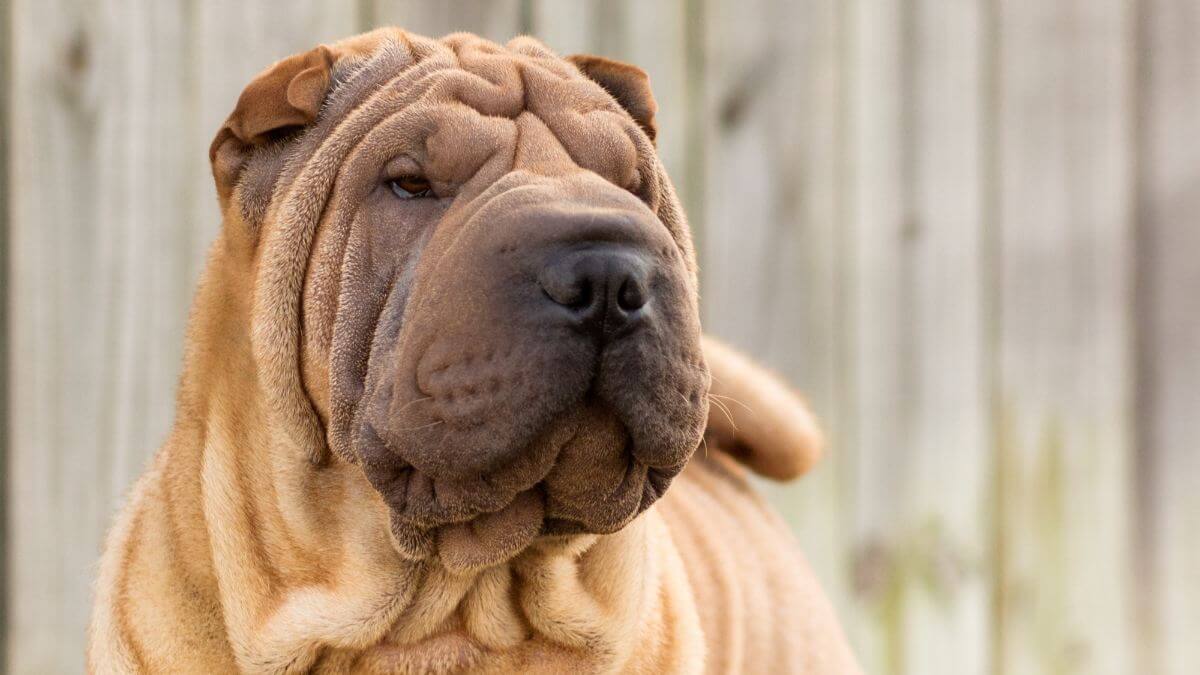
Home » The Many Colors of The Chinese Shar-pei

This article was originally published in Showsight Magazine, February 2019 issue.
As I sit ringside for the 2018 Chinese Shar-Pei Nationals, with the familiar smell of coffee in hand and the excitement that only a large collection of Shar-Pei from across the country can bring, I watch and hope. This year, I wish for something different—not in the judges or the winners, but in seeing more variety in the dogs being exhibited.
Shar-Pei are acceptable in any color, every color, yet even at Nationals, the variety is limited. This is the long-term result of personal tastes, rumors, and misguided breeding. Small decisions over generations of breeding, active in the U.S. since 1979, have created a sea of fawn dogs, with only the occasional “odd man out” dilute in the ring.
I began this article thinking of all the ways I could share my love and affection for the colored dogs. As I contemplated how to express my frustration about the lack of color in the ring, I wondered how we ended up here.
Was it irresponsible breeders who bred only for color, creating a gene pool seen as inferior to show-bred dogs? Or was it the show breeders, who let colored dogs leave their breeding programs to avoid being labeled as “color breeders”?
It’s no secret that I love all the colors of the Shar-Pei. I realized the best way to address this is to show my appreciation for all the breed’s colors and hope others will come to appreciate them too.
Striking and bright, with its own subset of shades ranging from a tinge of blue to an almost gold hue. Its pigment can vary from clear to lavender.
Think of it as a dilute fawn. The pigment may be either chocolate dilution or clear pigment.
A dilute red that is beautiful and elegant. A red carrying a chocolate dilution, this color is a crowd favorite in the Shar-Pei community, though less frequently seen than its red counterpart in Red.
Soft and mauve with lavender pigment, lilac dilute occurs when both parents carry genes for blue and chocolate. The pigment can range from light to dark.
A rich chocolate coat complemented by lavender pigment and a lavender tongue.
Often referred to as “pinkies,” this shade varies from cream to bright pink. Scarlett, an example of Isabella dilute, showcases its distinctiveness. Although not genetically confirmed, this color is believed to result from a combination of carriers for blue, fawn, chocolate, or cream dilution.
This shade ranges from fawn to nearly pink. While not listed on AKC forms, it resembles fawn, with the difference being blue masks, noses, and pigment instead of black.
Sable features a two-banded hair color pattern. The presence of sable must be uniform across the body rather than forming a distinct pattern.
A personal favorite, blue Shar-Pei exhibit shades from silver to dark gunmetal (nearly black). Their mouths and tongues are self-pigmented, and their eyes are often hazel instead of dark brown.
The Breed Standard does not favor any specific color, but as breeders and judges, it is crucial to conserve the dilutes. Recently, there has been a noticeable increase in breeders incorporating color dogs into their programs. I look forward to a Nationals event that fully showcases the vibrant spectrum of Shar-Pei colors.